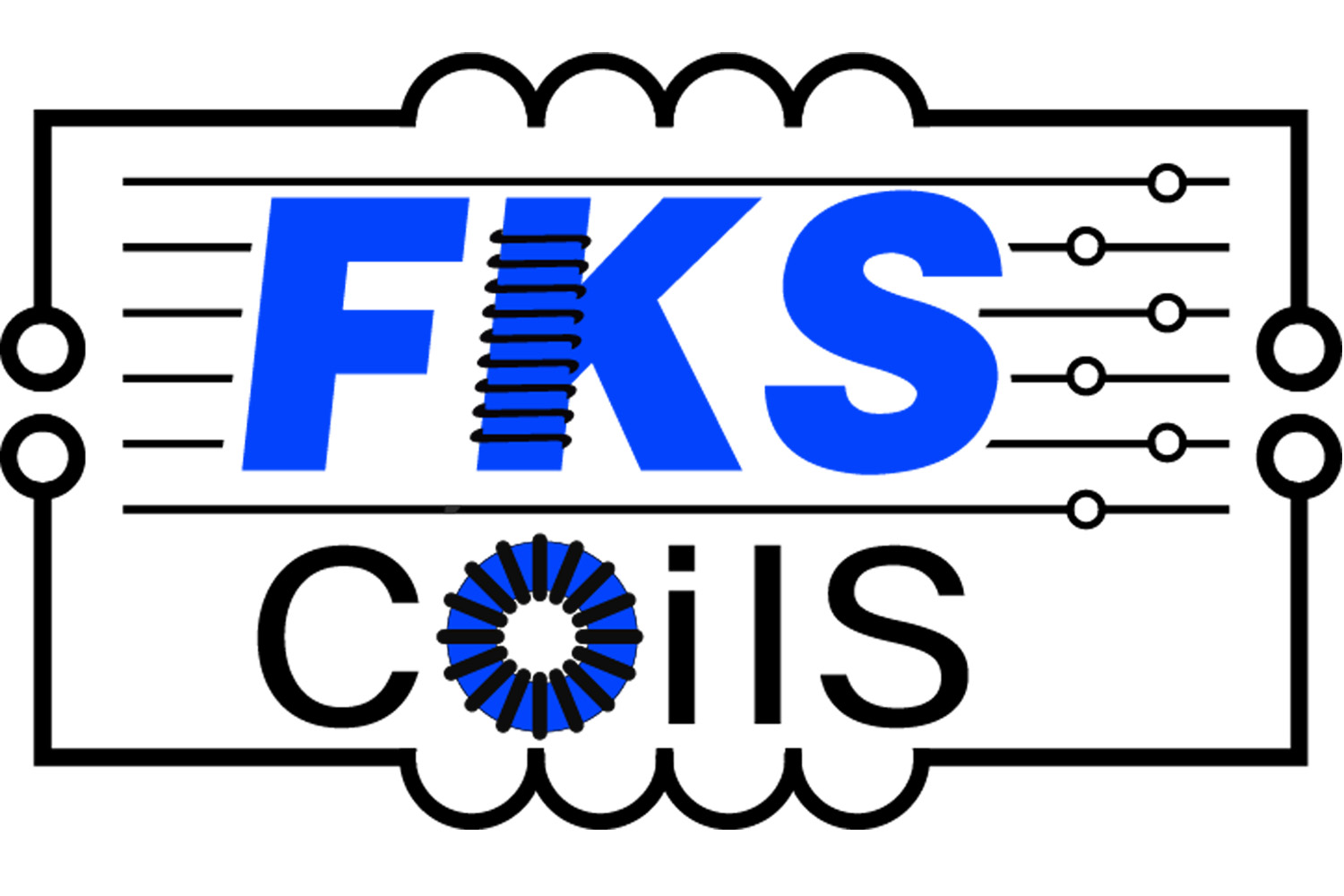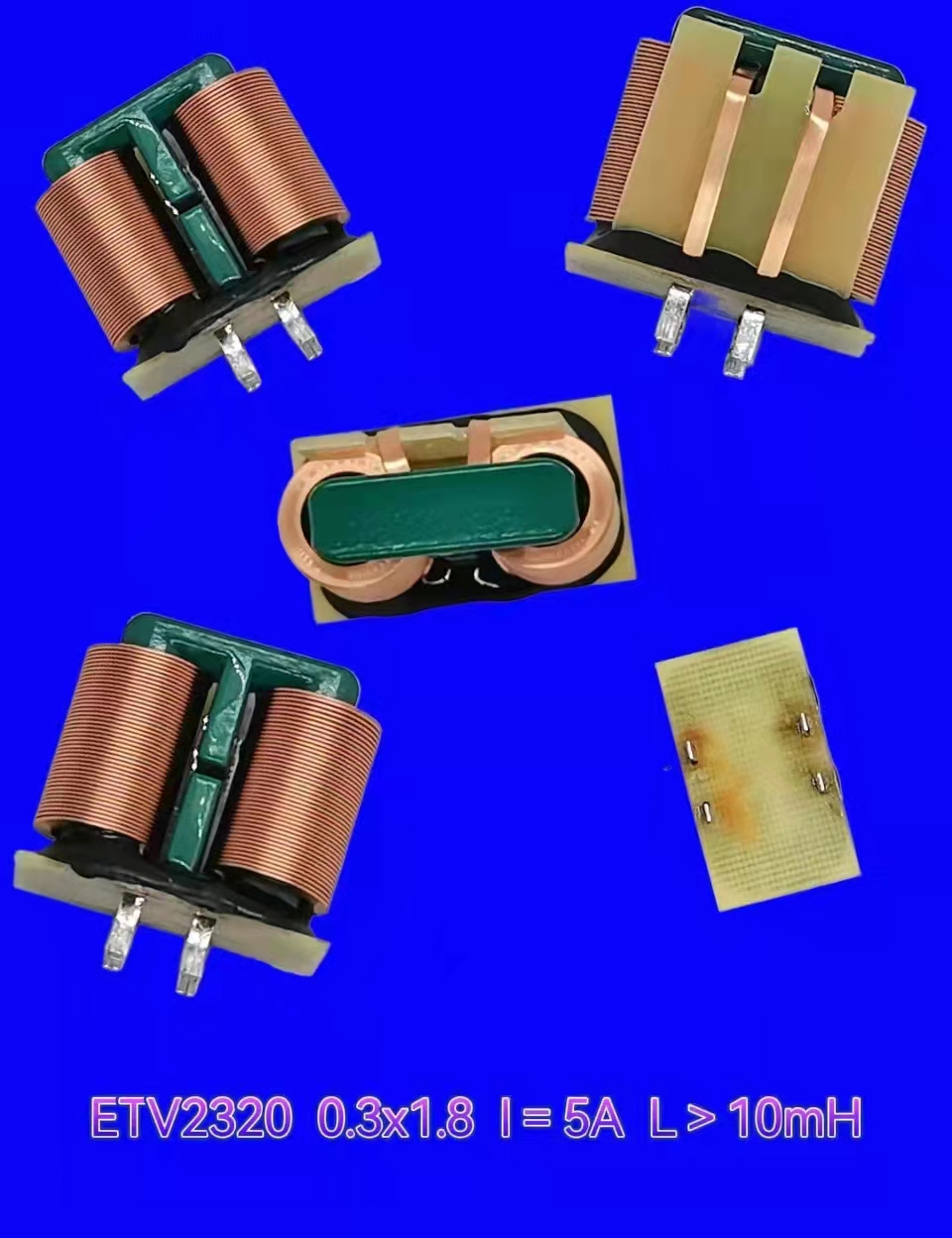 |
Shaanxi FKS Electronic Parts Import & Export Co.,Ltd.Xixian New Area FKS Electronic Technology Co.,Ltd. |
|
||||||
Inductors and Inductance Materials are introduced in detail
Inductors and Inductance Materials are introduced in detail
1. Inductors and Inductance Materials are introduced in detail
1.1 Definition of Inductance:
Inductance is the ratio of the magnetic flux of the wire to the current that produces this magnetic flux when an alternating current is passed through the wire, which generates an alternating magnetic flux in and around the wire.
When a DC current is passed through the inductor, there are only fixed magnetic lines of force around it, which do not change with time; however, when an AC current is passed through the coil, there will be magnetic lines of force around it that change with time. According to Faraday's Law of Electromagnetic Induction---Magnetic Electricity Analysis, the changing magnetic lines of force will generate an induced potential at both ends of the coil, which is equivalent to a "new power supply". When a closed loop is formed, this induced potential will generate an induced current. It is known from Lenz's law that the total amount of magnetic field lines generated by the induced current should try to prevent the change of the original magnetic field lines. Since the original magnetic field line change comes from the change of the external alternating power supply, from the objective effect, the inductance coil has the characteristic of preventing the current change in the alternating current circuit. The inductance coil has similar characteristics to the inertia in mechanics, and is named "self-induction" in electricity. Usually, sparks will occur at the moment when the knife switch is opened or the knife switch is turned on. This is the phenomenon of self-induction. caused by high induced potential.
In short, when the inductance coil is connected to the AC power supply, the magnetic lines of force inside the coil will change constantly with the alternating current, causing the coil to continuously generate electromagnetic induction. This electromotive force generated by the change of the current of the coil itself is called "self-induced electromotive force".
It can be seen that the inductance is only a parameter related to the number of turns, size, shape and medium of the coil. It is a measure of the inertia of the inductive coil and has nothing to do with the applied current.
1.2 Inductor coil and transformer
Inductive coil: When there is current in the wire, a magnetic field is established around it. Usually we wind the wire into a coil to enhance the magnetic field inside the coil.
The inductance coil is made by winding the wire (enameled wire, yarn package or bare wire) around the insulating tube (insulator, iron core or magnetic core) one by one (the wires are insulated from each other). In general, the inductor coil has only one winding.
Transformer: When a changing current flows through the inductive coil, not only an induced voltage is generated at both ends of itself, but also an induced voltage can be generated in the nearby coils. This phenomenon is called mutual inductance. Two coils that are not connected but close to each other and have electromagnetic induction between each other are generally called transformers.
1.3 Symbol and unit of inductance
Inductance symbol: L
Inductance unit: Henry (H), millihenry (mH), microhenry (uH), 1H=103mH=106uH.
1.4 Classification of inductors:
According to the form of inductance: fixed inductance, variable inductance.
According to the nature of the magnetic conductor: air core coil, ferrite coil, iron core coil, copper core coil.
According to the nature of work: antenna coil, oscillator coil, choke coil, trap coil, deflection coil.
According to the winding structure classification: single-layer coil, multi-layer coil, honeycomb coil.
According to the working frequency classification: high frequency coil, low frequency coil.
Classification according to structural characteristics: magnetic core coil, variable inductance coil, color code inductance coil, non-magnetic core coil, etc.
2. The main characteristic parameters of the inductor
2.1 Inductance L
The inductance L represents the inherent characteristics of the coil itself and has nothing to do with the magnitude of the current. Except for the special inductance coil (color-coded inductance), the inductance is generally not marked on the coil, but marked with a specific name.
2.2 Inductance XL
The magnitude of the resistance of the inductive coil to the alternating current is called the inductive reactance XL, and the unit is ohm. Its relationship with inductance L and AC frequency f is XL=2πfL
2.3 Quality factor Q
The quality factor Q is a physical quantity that represents the quality of the coil, and Q is the ratio of the inductive reactance XL to its equivalent resistance, namely: Q=XL/R.
The higher the Q value of the coil, the smaller the loop loss. The Q value of the coil is related to the DC resistance of the wire, the dielectric loss of the skeleton, the loss caused by the shield or iron core, and the influence of the high-frequency skin effect. The Q value of the coil is usually tens to hundreds. The use of magnetic core coils and multi-strand thick coils can improve the Q value of the coils.
2.4 Distributed capacitance
The capacitance that exists between turns and turns of the coil, between the coil and the shield, and between the coil and the plate is called distributed capacitance. The existence of distributed capacitance reduces the Q value of the coil and deteriorates the stability, so the smaller the distributed capacitance of the coil, the better. The distributed capacitance can be reduced by using the segmented winding method.
2.5 Allowable error
The percentage obtained by dividing the difference between the actual value of the inductance and the nominal value by the nominal value.
2.6 Nominal current
Refers to the current that the coil allows to pass, usually represented by the letters A, B, C, D, and E, respectively. The nominal current values are 50mA, 150mA, and 300mA, 700mA, 1600mA.
3. Commonly used inductance coils
3.1 Single-layer coil
The single-layer coil is wound on a paper tube or bakelite skeleton with insulated wires one after the other. Such as transistor radio medium wave antenna coil.
3.2 Honeycomb coil
If the coil is wound, its plane is not parallel to the rotation plane, but intersects at a certain angle, this kind of coil is called a honeycomb coil. The number of times the wire is bent back and forth during one rotation is often referred to as the number of inflection points. The advantages of the honeycomb winding method are small size, small distributed capacitance, and large inductance. The honeycomb coils are wound by the honeycomb winding machine. The more kinks, the smaller the distributed capacitance.
3.3 Ferrite cores and iron powder core coils
The inductance of the coil is related to the presence or absence of a magnetic core. Inserting a ferrite core in an air-core coil increases the inductance and improves the quality factor of the coil.
3.4 Copper core coil
Copper core coils are widely used in the ultra-short wave range, and the inductance is changed by rotating the position of the copper core in the coil. This adjustment is more convenient and durable.
3.5 Color Coded Inductor Coil
It is a high-frequency inductive coil, which is made by winding some enameled wires on the magnetic core and then encapsulating it with epoxy resin or plastic. Its operating frequency is 10KHz to 200MHz, and the inductance is generally between 0.1uH and 3300uH. A color-coded inductor is an inductor with a fixed inductance, and its inductance is marked with a color ring in the same way as a resistor. Its unit is uH.
3.6 Choke coil (choke coil)
The coil that restricts the passage of alternating current is called choke coil, which is divided into high frequency choke coil and low frequency choke coil.
3.7 Deflection Coil
The deflection coil is the load of the output stage of the TV scanning circuit. The deflection coil requires: high deflection sensitivity, uniform magnetic field, high Q value, small size and low price.
4. The role of inductance in the circuit
Basic functions: filtering, oscillation, delay, notch, etc.

Detailed explanation: In electronic circuits, the inductance coil has a limiting effect on the AC current. It can form a high-pass or low-pass filter, a phase-shift circuit and a resonant circuit with a resistor or capacitor; the transformer can be used for AC coupling, voltage transformation, variable flow and impedance transformation, etc.
From the inductive reactance XL=2πfL, the larger the inductance L, the higher the frequency f, and the greater the inductive reactance. The magnitude of the voltage across the inductor is proportional to the inductance L, and is also proportional to the current change speed △i/△t
This relationship can also be expressed by the following formula:
The inductor coil is also an energy storage element, which stores electrical energy in the form of magnetism. The magnitude of the stored electrical energy can be expressed by the following formula: WL=1/2 Li2 .
It can be seen that the greater the coil inductance, the greater the flow, and the more electrical energy stored.
inductance symbol
Nominal inductance: straight standard, color ring standard, no standard
Inductance directionality: no direction
Check the quality of the inductance method: use an inductance measuring instrument to measure its inductance; use a multimeter to measure its on-off, the ideal inductance resistance is very small, almost zero.
5. The model specification and name of the inductor.
There are many inductance manufacturers at home and abroad, including SAMUNG, PHI, TDK, ****X, VISHAY, NEC, KEMET, ROHM and so on.
5.1 Chip Inductors
Inductance: 10NH~1MH
Material: Ferrite Wirewound Ceramic Laminate
Accuracy: J=±5% K=±10%M=±20%
Size: 0402 0603 08051008 1206 1210 1812 1008=2.5mm*2.0mm
1210=3.2mm*2.5mm
Individual schematic diagrams: SMD Wound Inductors SMD Laminated Inductors
5.2 Power Inductor
Inductance: 1NH~20MH
With shield, without shield
Size: SMD43, SMD54, SMD73, SMD75, SMD104, SMD105; RH73/RH74/RH104R/RH105R/RH124; CD43/54/73/75/104/105;
Individual schematic diagrams: SMD power inductors Shielded power inductors
5.3 Chip magnetic beads
Type: CBG (common type) Impedance: 5Ω~3KΩ
CBH (high current) impedance: 30Ω~120Ω
CBY (spike type) impedance: 5Ω~2KΩ
Individual schematic diagram: SMD magnetic beads SMD high current magnetic beads
Specifications: 0402/0603/0805/1206/1210/1806 (SMD magnetic beads)
Specifications: SMB302520/SMB403025/SMB853025 (SMD high current magnetic beads)
5.4 Plug-in beads
Specifications: RH3.5
Specification A B C Impedance value (Ω)
10mHz 100mHz
RH3.5X4.7X0.8 3.5±0.15 4.7±0.3 62±2 20 45
RH3.5X6X0.8 3.5±0.15 6±0.3 62±2 25 65
RH3.5X9X0.08 3.5±0.15 9±0.3 62±2 40 105
5.5 Color Ring Inductance
Inductance: 0.1uH~22MH
Size: 0204, 0307, 0410, 0512
Bean-shaped inductor: 0.1uH~22MH
Size: 0405, 0606, 0607, 0909, 0910
Accuracy: J=±5% K=±10%M=±20%
Accuracy: J=±5% K=±10%M=±20%
The color ring inductance of the plug-in Reading method: the mark of the same color ring resistance
5.6 Vertical inductors
Inductance: 0.1uH~3MH
Specifications: PK0455/PK0608/PK0810/PK0912
5.7 Axial filter inductor
Specifications: LGC0410/LGC0513/LGC0616/LGC1019
Inductance: 0.1uH-10mH.
Rated current: 65mA~10A.
The Q value is high, the price is generally low, and the self-resonant frequency is high.
5.8 Magnetic Ring Inductance
Specifications: TC3026/TC3726/TC4426/TC5026
Size (unit mm): 3.25~15.88
5.9 Air Core Inductors
In order to obtain a larger inductance value, the air core inductance often needs to be wound with more enameled wires. In order to reduce the influence of the line resistance of the inductor itself on the DC current, enameled wires with a thicker wire diameter should be used. However, in some products with smaller volume, it is not practical to use heavy and large air core inductors, which not only increases the cost, but also limits the volume of the product. In order to improve the inductance value and keep the weight light, we can insert a magnetic core and an iron core into the air core inductor to improve the self-inductance capability of the inductor, thereby increasing the inductance value. At present, in computers, most of them are magnetic core inductors.
6. The application of inductance in the circuit
The most common function of inductors in circuits is to form LC filter circuits together with capacitors. We already know that capacitors have the ability to "block DC and pass AC", while inductors have the function of "pass DC and block AC". If the DC current with many interference signals is passed through the LC filter circuit (as shown in the figure), then the AC interference signal will be consumed by the capacitor as heat energy; when the pure DC current passes through the inductor, the AC interference signal will also be absorbed by the capacitor. It becomes magnetic induction and thermal energy, and the higher frequency is most likely to be impedance by the inductance, which can suppress the interference signal of higher frequency.
LC filter circuit
The inductance in the power supply part of the circuit board is generally surrounded by a very thick enameled wire on a circular magnetic core coated with various colors. And there are generally several tall filter aluminum electrolytic capacitors nearby, which are composed of the above-mentioned LC filter circuit. In addition, the circuit board also uses a large number of "snake lines + SMD tantalum capacitors" to form LC circuits, because the snake lines fold back and forth on the circuit board, which can also be regarded as a small inductance.
7. Common core magnetic ring
Iron powder core series
Material: -2 material (red/transparent), -8 material (yellow/red), -18 material (green/red), -26 material (yellow/white), -28 material (gray/green), -33 material Material (gray/yellow), -38 material (gray/black), -40 material (green/yellow), -45 material (black), -52 material (green/blue); size: OD size from 30 to 400D (Note: The outer diameter is from 7.8mm to 102mm).
FeSiAl series
The main u values are: 60, 75, 90, 125; size: the outer diameter is from 3.5mm to 77.8mm.
In addition to the main ring, the specifications of the two products are E-shaped, rod-shaped, etc., and can also be customized according to various parameters provided by customers. They are widely used in computer motherboards, computer power supplies, power supplies, mobile phone chargers, lighting transformer dimmers, uninterruptible power supplies (UPS), control panels of various household appliances, etc.
8. The connection and difference between inductance and magnetic beads
What is the connection and difference between inductors and magnetic beads
1. The inductor is an energy storage element, and the magnetic bead is an energy conversion (consumption) device
2. Inductors are mostly used in power filter circuits, and magnetic beads are mostly used in signal circuits for EMC countermeasures.
3. Magnetic beads are mainly used to suppress electromagnetic radiation interference, while inductors are used in this regard to focus on suppressing conductive interference. Both can be used to deal with EMC, EMI issues.
There are two ways of EMI, namely: radiation and conduction, and different ways use different suppression methods. The former uses magnetic beads and the latter uses inductors.
4. Magnetic beads are used to absorb ultra-high frequency signals, such as some RF circuits, PLL, oscillator circuits, including ultra-high frequency memory circuits (DDR
SDRAM, RAMBUS, etc.) all need to add magnetic beads to the power input part, while the inductor is a kind of energy storage element, which is used in LC oscillator circuits, medium and low frequency filter circuits, etc., and its application frequency range rarely exceeds 50MHZ.
5. Inductance is generally used for circuit matching and signal quality control. General ground connection and power connection.
Use magnetic beads where the analog ground and digital ground are combined. Magnetic beads are also used for signal lines.
The size of the magnetic bead (to be exact, it should be the characteristic curve of the magnetic bead)
Depends on the frequency of the interfering wave that needs to be absorbed by the magnetic beads. Magnetic beads are high frequency resistance, low resistance to DC, and high resistance to high frequency. For example, 1000R@100Mhz means that there is a resistance of 1000 ohms for a signal with a frequency of 100M. Because the unit of the magnetic bead is nominal according to the impedance it produces at a certain frequency, the unit of impedance is also ohm. The characteristic curve of frequency and impedance is usually attached to the datasheet of the magnetic bead. Generally, 100MHz is used as the standard, such as 2012B601, which means that the Impedance of the magnetic bead is 600 ohms at 100MHz.
9. Calculation formula of partial inductance
9.1 Ring Inductor
For ring CORE, the following formula is available: (IRON)
L=N2*AL L=Inductance(H)AL=Inductance
H-DC=0.4πNI /lN==The number of winding turns (circles)
H-DC=DC magnetizing force I=Through current(A) l=Magnetic path length(cm)
l and AL value, please refer to the Micrometa comparison table. E.g:
With T50-52 material, winding 5 and a half turns, its L value is T50-52 (indicating OD is 0.5 inches), and its AL value is about 33nH after looking up the table
L=33*(5.5)2=998.25nH≈1μH
When passing 10A current, its L value can be changed by l=3.74 (check table)
H-DC=0.4πNI / l = 0.4×3.14×5.5×10 / 3.74 = 18.47 (after looking up the table)
You can know the degree of decrease in L value (μi%)
9.2 Inductance calculation
Introduce an empirical formula
L=(k*μ0*μs*N2*S)/l
in
μ0 is vacuum permeability=4π*10(-7). (10 to the negative seventh power)
μs is the relative permeability of the magnetic core inside the coil, and μs=1 in the case of an air-core coil
N2 is the square of the number of coil turns
The cross-sectional area of the S coil, in square meters
l The length of the coil, in meters
The k factor depends on the ratio of the radius (R) to the length (l) of the coil.
The unit of the calculated inductance is Henry. K value table
2R/l corresponds to K 3R/l corresponds to K 3R/l corresponds to K 4R/l corresponds to K
0.1 0.96 0.6 0.79 2 0.52 10 0.2
0.2 0.92 0.8 0.74 3 0.43 20 0.12
0.3 0.88 1 0.69 4 0.37

【 Go Back 】 | 【 Print 】 | 【 Close this window 】





